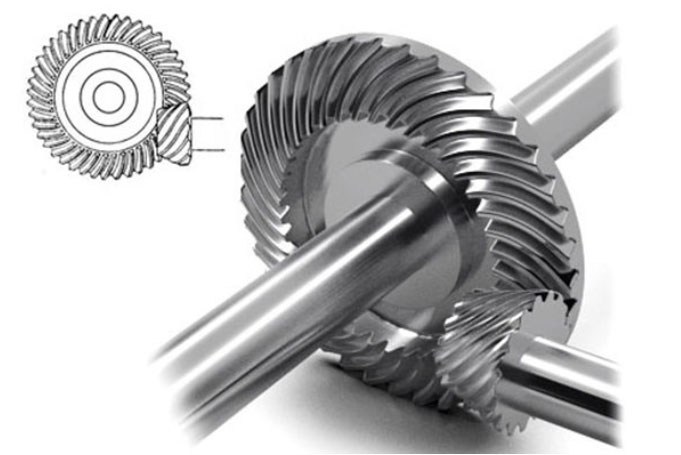Hypoid gear is essential components in various applications, including automotive differentials, industrial machinery, and heavy equipment. These gears are known for their high torque capacity and smooth operation. However, they also face significant challenges in terms of durability and longevity due to high contact stresses and sliding actions. To address these challenges, material innovations have been at the forefront of achieving superior performance. This article explores recent advancements in materials and coatings that enhance the durability and longevity of hypoid gear.

Advanced Materials for Hypoid Gear
- Carburized Steel: Carburized steel has been a staple in hypoid gear manufacturing due to its high surface hardness and excellent wear resistance. Recent innovations have focused on optimizing the carburizing process and alloy composition to further improve fatigue strength and reduce gear noise.
- Alloyed Steels with Additives: Adding elements like vanadium, molybdenum, and nickel to steel alloys can significantly enhance their mechanical properties. These additives improve the hypoid gear’s resistance to pitting and scuffing, which are common wear mechanisms in hypoid gear.
- Powder Metallurgy (PM) Steels: PM steels are gaining popularity for their uniform microstructure and excellent mechanical properties. The ability to precisely control the composition and density of PM steels allows for the production of hypoid gear with superior wear resistance and fatigue strength.
Coatings for Enhanced Durability
- Diamond-Like Carbon (DLC) Coatings: DLC coatings are renowned for their hardness and low friction properties. Applying DLC coatings to hypoid gear reduces wear and enhances their performance under high-load conditions.
- Nitriding and Nitrocarburizing: These surface treatment processes introduce nitrogen into hypoid gear surface, forming hard nitrides that improve wear resistance and fatigue strength. Nitriding is particularly effective for hypoid gear operating under high-stress conditions.
- Ceramic Coatings: Advanced ceramic coatings, such as titanium nitride (TiN) and chromium nitride (CrN), provide exceptional hardness and corrosion resistance. These coatings are beneficial for hypoid gear exposed to harsh environments.
Comparison of Material Properties
The following table compares the key properties of different materials and coatings used for hypoid gear:
| Material/Coating | Hardness (HV) | Wear Resistance | Fatigue Strength | Corrosion Resistance | Cost Efficiency |
|---|---|---|---|---|---|
| Carburized Steel | 700-900 | High | High | Moderate | Moderate |
| Alloyed Steels | 600-800 | High | High | Low | Moderate |
| Powder Metallurgy Steels | 750-950 | Very High | Very High | Moderate | High |
| DLC Coatings | 2000-3000 | Very High | Moderate | High | High |
| Nitriding | 900-1100 | High | High | Low | Moderate |
| Ceramic Coatings | 1800-2400 | Very High | High | Very High | High |
Conclusion
The quest for superior durability and longevity in hypoid gear is driven by continuous innovations in materials and coatings. Carburized and alloyed steels, along with advanced PM steels, offer significant improvements in wear resistance and fatigue strength. Coatings such as DLC, nitriding, and ceramic provide additional layers of protection, enhancing the performance and lifespan of hypoid gear. As these technologies evolve, we can expect even greater advancements, ensuring that hypoid gear meet the demanding requirements of modern applications.
